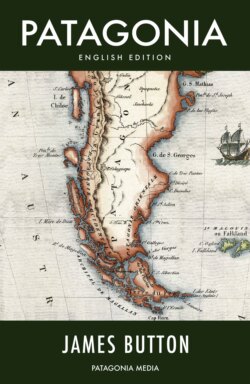Читать книгу Patagonia - James Button - Страница 11
На сайте Литреса книга снята с продажи.
Defining the borders of the Patagonian region
ОглавлениеHistorically, the traditional boundaries of Patagonia are well known, but the subject continues to be debatable considering recent archaeological discoveries and the availability of a more in-depth and widely publicized investigation in modern times. Therefore, this author considers it is necessary to attempt a clarification of its traditional past and present boundaries, in order to compare them with most recent discoveries, so as to find a new delineation for Patagonia, without considering the distinct indigenous groups that have so far been classified as sub-groups, according to the parameters and standpoints imposed by Europeans and traditional historians.
Serving extraneous objectives for defining internal borders or defending frontiers or causes that are now past, or to serving religious, cultural, climatic or linguistic interests, leads some to artificially position Patagonia’s borders according to those schemes, and they are therefore not considered here. The objective is to leave a diffuse subject behind and recognize that the location of the indigenous populations that inhabited Patagonia is fundamental to recognizing its true extent. This new perspective opens a wide field of investigation for a contemporary way of seeing things.
It is generally agreed that the main rivers enabled the principal human settlements in Patagonia to emerge and that their extent was defined by those same rivers. Furthermore, human populations, flora and fauna on either side of the Andean Mountains are distinct and have clear natural boundaries that can be asserted both historically and archaeologically; and while nothing is definite with this material, an attempt at progress and an updating of history is made here by incorporating new discoveries. Without such an effort, one simply stagnates in the repetition of what is already known.
The appearance of new archaeological sources obliges us to redefine and analyse the position of Patagonia. The borders of a region as ancient as this, that dates from approximately 14,200 BC, merits a more in-depth analysis, taking into account the new sources that force us to redefine its traditional boundaries.
Current history cannot simply advance with discoveries alone, but rather their analysis must be applied to a range of situations, with reference to frontier interests and to the arbitrations that have taken place between Chile and Argentina. For this reason, Patagonia’s true nature requires us to update its history, and advances such as those made at Monte Verde near Puerto Montt and at Pilauco Bajo near Osorno create an opportunity for investigation in a serious context.
Until now, we have had difficulty studying just 500 years of history of Patagonia and have achieved only a vague understanding of its boundaries in the face of a war of maps that continue to define historic demarcations between the republics of Argentina and Chile. What we are faced with now, is a huge gap in the history that awaits discovery.
Given the above, I believe we must change our focus and become receptive to the era that is upon us, with all its technology that will allow us to discover the course of history in this great region with the aid of DNA sampling and carbon dating and other modern techniques –all to serve just one objective; namely to discover our natural history and investigate who really inhabited Patagonia and when. In this way, we will be able to continue making advances and discover this fascinating region of South America. We need to relate our knowledge to reality so we can find the original and definitive boundaries of this indomitable region christened Patagonia by Ferdinand Magellan in 1520.
